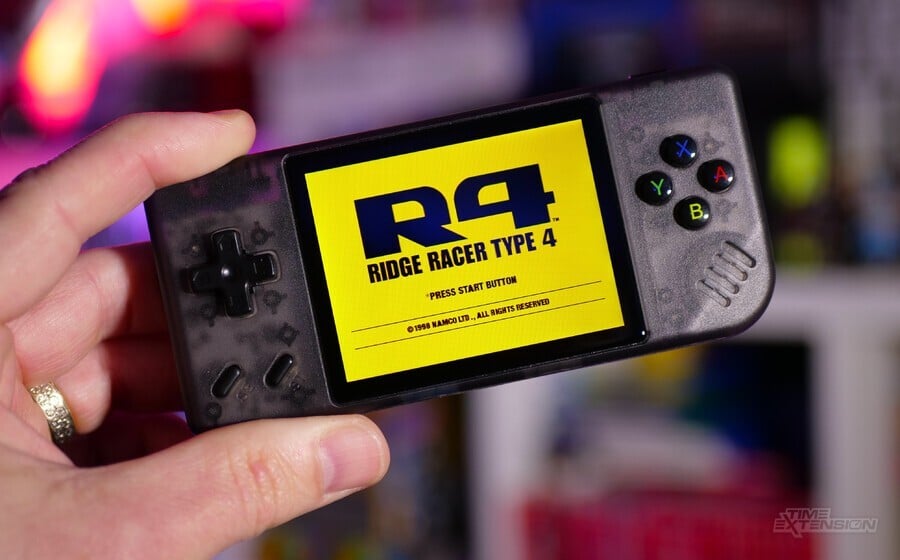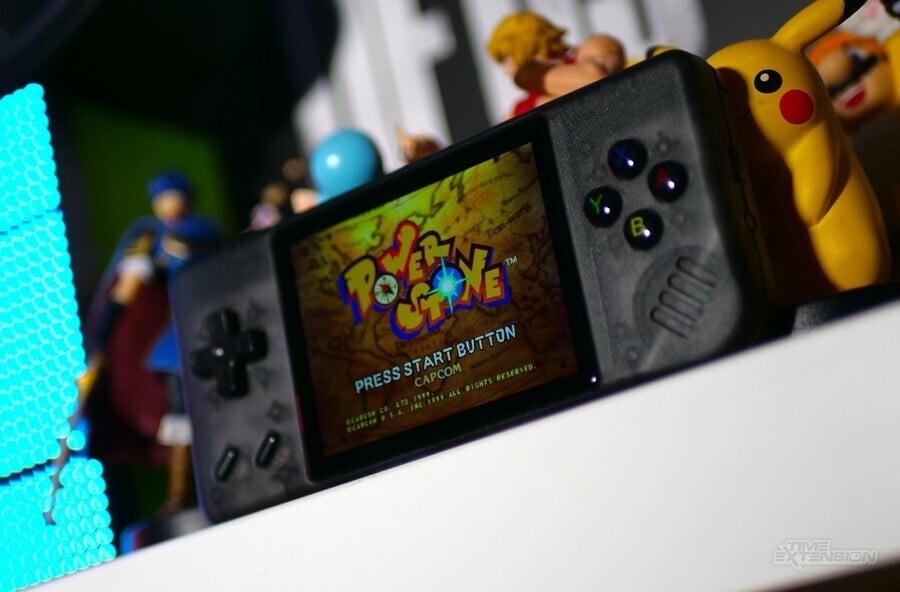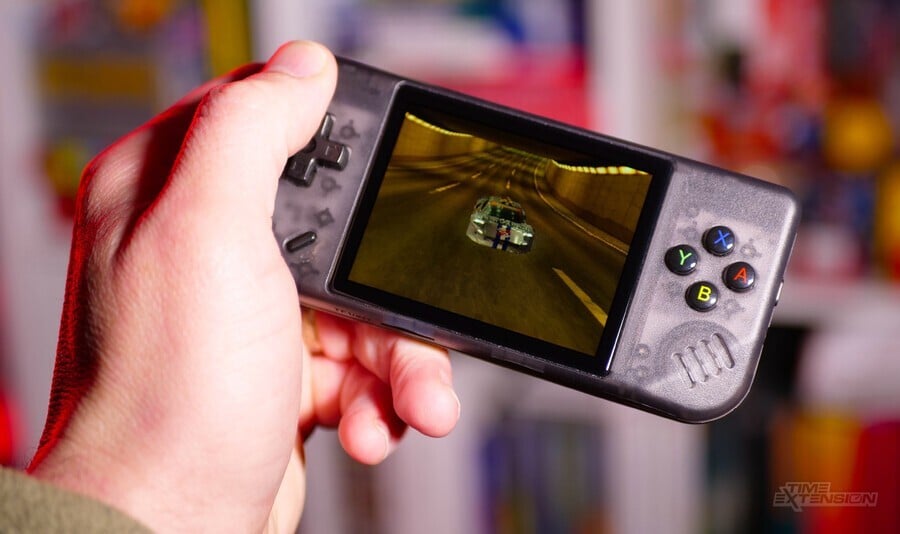
It's always interesting to see how design trends play out in the world of emulation-based handhelds, and it seems that the super-compact landscape format is in vogue at present; we've only just reviewed the Miyoo A30, and now we have the very similar Anbernic RG28XX.
Both of these devices are aiming for a high level of portability combined with a Game Boy Micro-style form factor – something that could be seen as both a blessing and a curse.
We've already passed judgment on the A30 and come away a little disappointed, but can Anbernic's challenger do any better? We're about to find out...
Anbernic RG28XX Review: Design & Display

Like the Miyoo A30, the Anbernic RG28XX is seriously dinky. It effortlessly slips into any pocket and won't take up much room in your bag, making it a great choice for retro gamers who don't have space for something large and cumbersome when they're on the road.
The front of the device has a D-pad, four action buttons, 'Start' and 'Select' keys and the single, front-firing speaker. On the bottom edge, you've got dual MicroSD card slots and the 3.5mm headphone socket, while the top is home to the mini-HDMI port, USB-C port, Menu button and four shoulder buttons. The left-hand edge has the volume rocker, while on the opposite edge, you'll find the power and reset buttons.
One of the things we really like about this device is the colour options available; we were sent the transparent version, but there's a bright orange edition that looks very striking, as well as a grey edition which calls to mind the North American SNES.
The moment you pick up the Anbernic RG28XX, you'll notice that the controls are a bit on the small side. The D-pad is smaller than the one on the Miyoo A30, as are the action buttons. This might seem like a huge problem – and, for those of you with large hands, it may well be a deal-breaker – but in our case, the D-pad was actually a pleasant surprise. While it is small, it's also precise and accurate. Dialogual inputs are easy to perform, but not so much so that you accidentally pull them off when you don't mean to.
The face buttons we're less thrilled with, purely because they're so small and tightly clustered together that it's too easy to accidentally press the wrong one during intense moments. The shoulder triggers are also a little hit-and-miss; L1 and R1 are so close to the corners of the Anbernic RG28XX that they sit flush with the case, making them hard to press unless you hold the device a certain way. L2 and R2, on the other hand, are more pronounced and easier to access during gameplay.
The Anbernic RG28XX takes its name from the 2.8-inch 640x480 IPS screen, which, while being a bit on the small side, is still easy enough to see. It's a shame, then, that it has less-than-impressive brightness – something we also disliked about the Miyoo A30.
Anbernic RG28XX Review: Performance

The RG28XX runs an AllWinner H700 chip, which means you'll be able to emulate consoles like the N64 and Dreamcast without any massive issues. That naturally means that any system released prior to those machines is also going to run well – with the notable exception of the Sega Saturn, which is a tricky system to emulate effectively unless you have a lot of processing power.
On the topic of those high-end systems, the eagle-eyed amongst you will have noticed that the RG28XX lacks an analogue stick, which is somewhat problematic for N64 and Dreamcast titles. Many games will allow you to use the D-pad by default, but in the case of those that don't, you can remap directional control to the RG28XX's pad.
You obviously lose a lot by swapping analogue for digital, so it can hardly be considered the ideal way to experience many of the best games on these two consoles.
The RG28XX's single speaker is fairly loud, but isn't all that pleasant to listen to when you turn it all the way up. It does the job, but we'd recommend making use of the 3.5mm headphone jack for audio whenever possible.
The internal rechargeable battery is rated at 3100mAh, which will give you around four hours of use on a single charge, based on our findings.
Anbernic RG28XX Review: Conclusion
When compared to the Miyoo A30, the RG28XX is the clear winner.
Sure, the controls feel a little small and the screen's brightness could be better, but what makes this such an appealing device is the fact that it's so easy to carry around with you.
We can't imagine a single situation where we'd have to think twice about popping this in our bag or jacket pocket before leaving the house, and that's a big selling point in a portable gaming platform. Just like the Game Boy Micro, this is a truly pocket-friendly system.
If you already own one of Anbernic's other recent handhelds, then you may want to pause before making a purchase, as you're getting roughly the same performance in terms of emulation but with some possible drawbacks – but for the asking price of around $60, this is a really decent emulation handheld, and one we'd recommend you take a look at if you're new to this sector of the market.
Thanks to Keep Retro for sending us the RG28XX unit used in this review.
